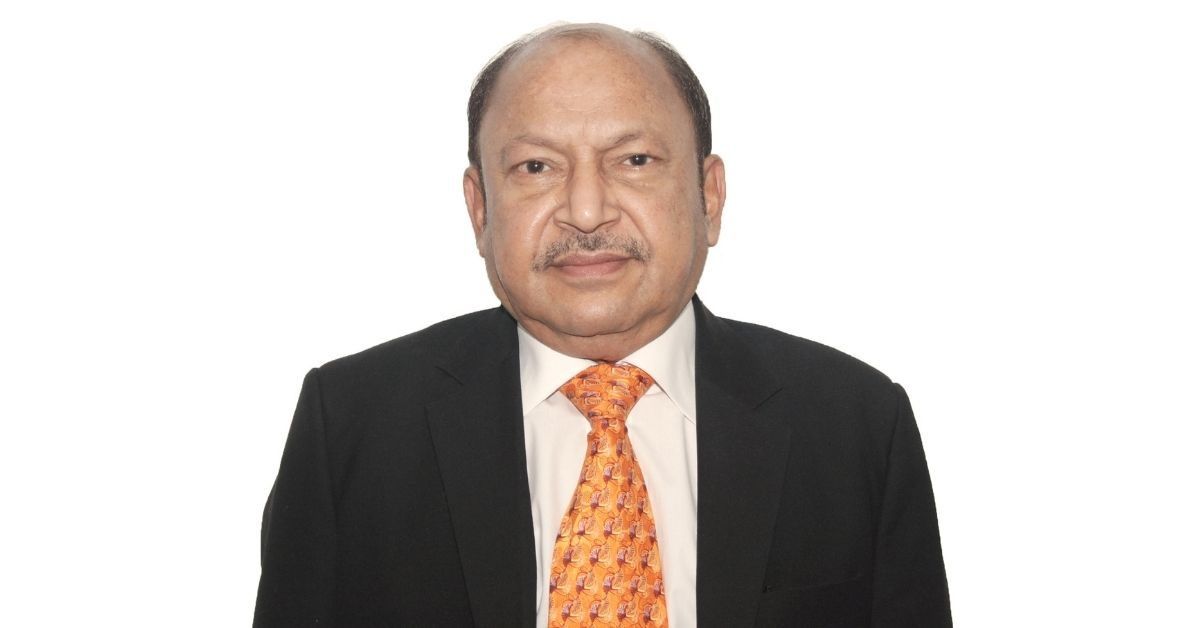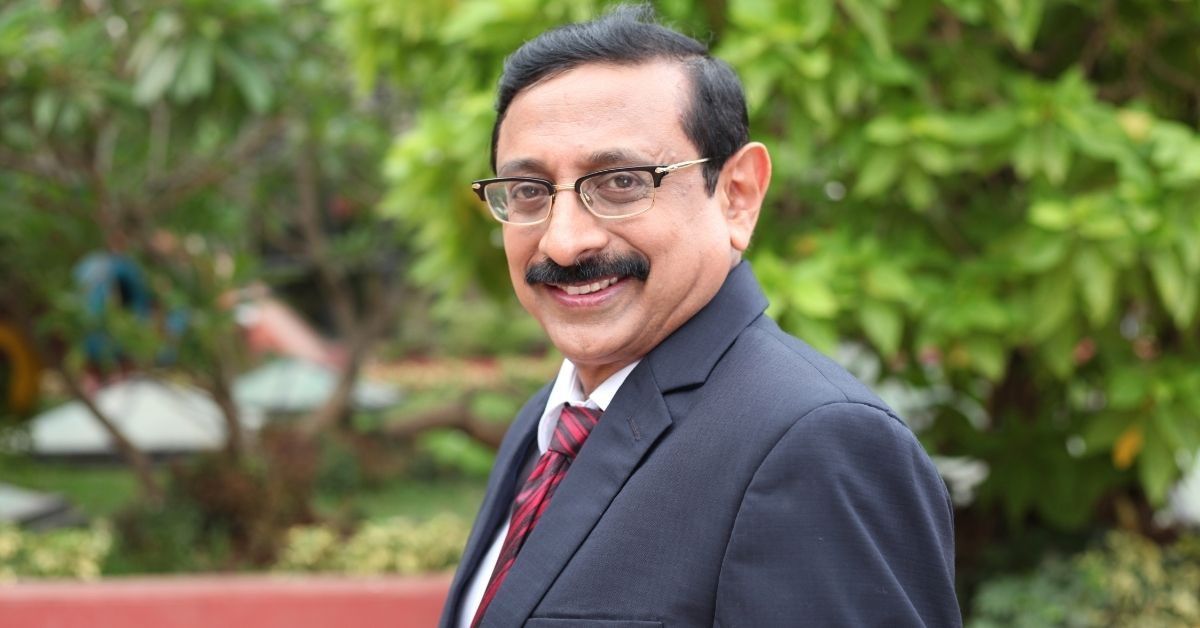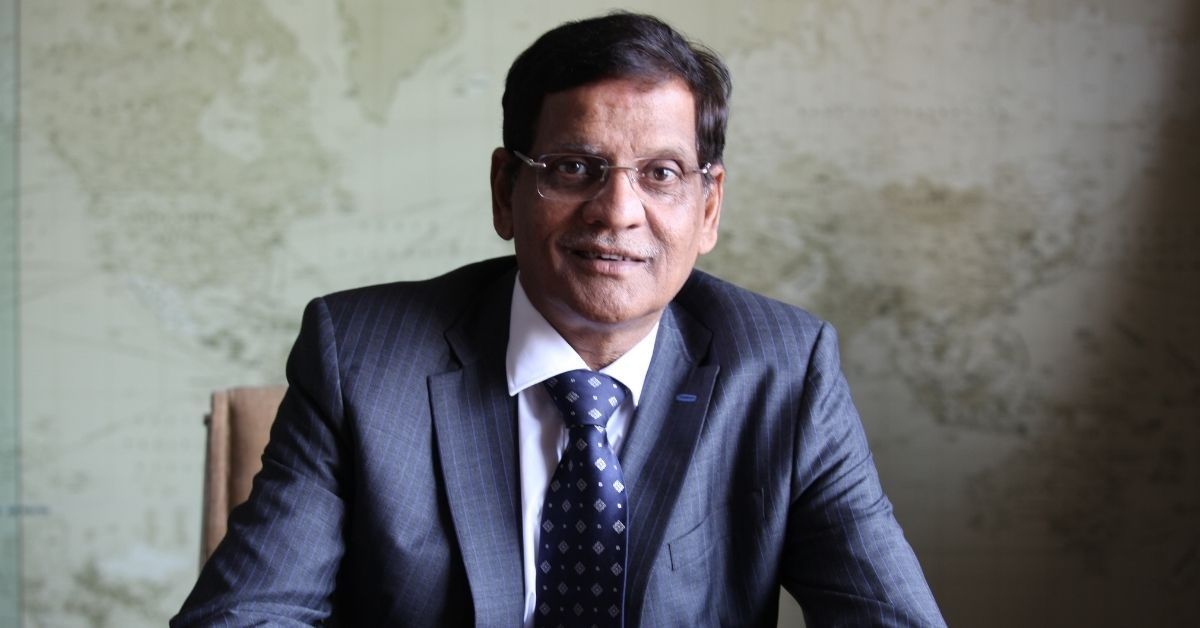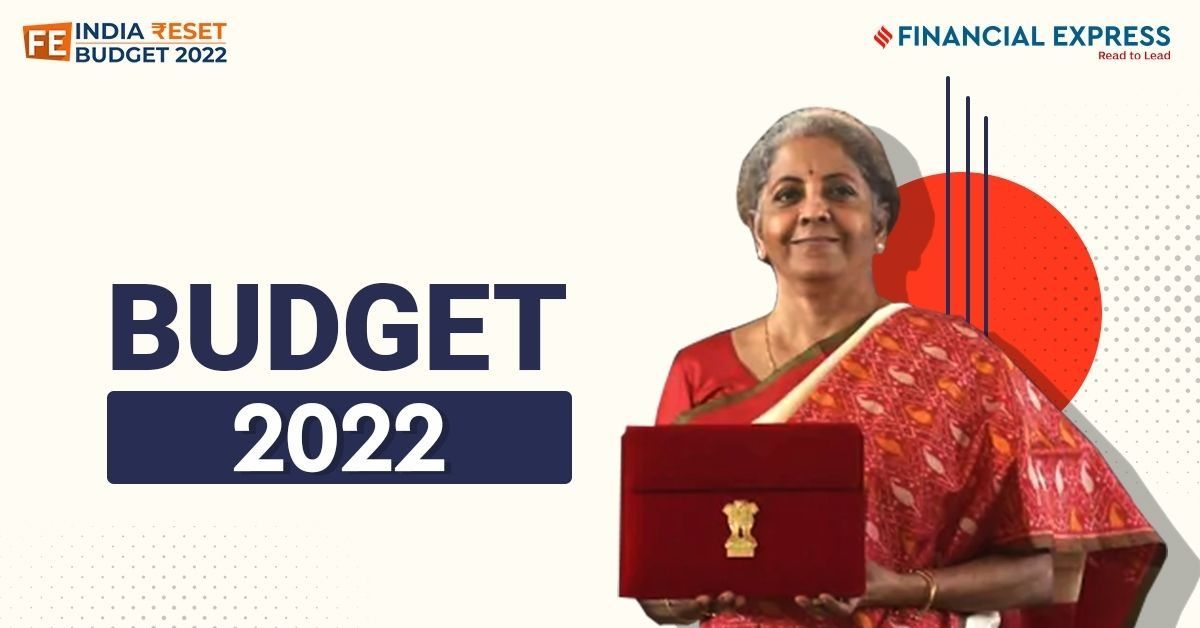The Union Budget 2022 gives a major thrust to the logistics and supply chain sector. Around 100 cargo terminals will be developed during the next three years under the PM Gati Shakti master plan. The Indian Railways has churned out new products to support farmers and MSMEs. The road infrastructure has got a major boost with new stretches of highways planned connecting ports to the hinterland. The industry has welcomed the budget with utmost excitement. Read on to know the industry leaders reactions to the Budget 2022.

Managing Director Gateway Distriparks
“The Government plans to boost swifter movement of goods across the country and to support the same one of the main initiatives mentioned in the budget was “Gati Shakti” plan, which envisages, amongst other thing, improvising better rail connectivity. It’s encouraging for the sector to see government’s increasing focus on planning, financing through innovative ways, use of technology, and speedier implementations.”
“The alignment of projects in National Infrastructure Pipeline, Gati Shakti Masterplan for expressways, 100 new cargo terminals for multi-nodal logistics will boost connectivity and will be a transformative approach for economic growth and sustainable development in India. We hope that the Unified Logistics Interface Platform will assist in efficient movement of goods, reduction of logistics costs and time, and assist Just-In-Time inventory management. As India gears up and prepares for a stronger and resilient economy with considerable investments in the infrastructure and increased manufacturing, the logistics sector as a service provider will be the critical enabler.”

and President Godrej Boyce
“The Budget for FY 2023 holds a lot of promise for the economy. It has a thrust for the social sector with investments in primary and vocational education, provision for drinking water to reach more households and the extension of the PM Awas Yojana to provide housing. In addition, its outlay for procurement of agricultural produce will reward the farmers for their effort and put money in their hands which will help to propel consumption demand.”
“The focus on the logistics sector through the PM Gati Shakti plan will give a fillip to the economy. Logistics costs in India count among the highest in the world. Creation of infrastructure is the best way to reduce the costs and introduce competitiveness in the economy to serve both the domestic market and exports. The initiative of spurring investments from the private sector by taking the lead through government investments of Rs. 7.5 lakh Cr. is laudable. The PLI scheme outlay for solar modules will support the solar power generation projects which are currently facing steep cost increases and supply constraints. Support for domestic manufacture of capital equipment by doing away with duty exemptions is also a welcome step.”
“Reforms in customs administration will no doubt support both the SEZs as well as other manufacturers in the domestic tariff area. Our SEZs are vulnerable to both disruptions in the global supply chain and also the emphasis on domestic sourcing that we increasingly see overseas. Permission to sell part of the capacity in DTA while maintaining a level playing field with domestic manufacturers will enhance scale and competitiveness whilst reducing reduce vulnerability.”
The economy is on a slow recovery path. This budget seeks to accelerate the growth through investments. “

“This is growth oriented budget with main thrust is on capital expenditure and increasing the manufacturing base in the country. For logistics sector this is going to be one of the important milestone, since this sector supports and improves the efficiency of endevours such as Atmanirbhar Bharat, Make in India, digital India etc.”
Important announcement such as:
PM GATISHAKTI
i) It is the transformative approach with driven by seven engines: Roads, Railways, Airports, Ports, Mass Transport, Waterways, and Logistics Infrastructure will be game changers for years to decade to come into country.
ii) Formulation of Master Plan for expressways help in boosting the speed of logistics and reduction of logistics cost.
“Another important announcement which is eagerly followed by logistics sector is pertaining to Unified Logistics Interface Platform allowing data exchange among all mode operators. Creation of Multimodal Logistics park through PPP. For promotion of local business One Station One Product will be helping small MSME and small exporter considerably. Infusing 20000 crores for Road sector.”
100 cargo terminal in 3 years.
“Availability of emergency credit line guarantee for MSMEs which has extended has been extended upto March 2023 will help enterprises considerably. On Customs side one of a kind landmark exercise has been carried out and for simplification and 350 exemptions have been withdrawn. Main thrust has been to simplify custom tariff structure to create transparency for trade and industry. Simplification of IGCR Rules will provide impacts to domestic manufacturing and make Indian product more competitive in International market.”
“On GST front rationalization in return filing procedure, sequential filing of GSTR1 allowing transfer of inputs tax credit in electronic cash ledger for certain category are few highlights that will help the trade and industry. Most important aspect has been usage of IT tools, artificial intelligence to boost revenue in GST. FFFAI is in constant dialog with CBIC for ensuring that endeavours of Government of India are implemented in most efficient manner for timely custom clearance and movement of goods internationally and nationally.”

Allcargo Logistics Ltd
“Go India, Grow India! The budget is clear on both growth drivers and health checks and places long term thrust on development. With big Capex infusion, macro push to key sectors like infrastructure, Finance Minister Nirmala Sitharaman has walked the expected lines to the fine balance between the spending and fiscal deficit while going all out to maintain the momentum of growth. The PM Gatishakti, the umbrella scheme, will get more firepower with higher allocations across the board to propel all related sectors including logistics. The development of multimodal logistics parks will further spur economic growth.”
“The Unified Logistics Interface Platform is a progressive move in tune with the time to enable efficient movement of goods, cut down logistics costs and better inventory management. Above all, the budget can be termed smarter and greener. The 5G rollout, digital rupee driven by blockchain, supportive measures for IT and startups make it smarter. The stress on clean energy, reverse logistics, support to EV revolution etc make it greener and sustainable.”

Welspun One Logistics Parks
“The Union budget presented by the Honourable Finance Minister highlighted a vision of a brighter and more digitally advanced country. The focus on multimodal connectivity through the PM Gati Shakti program between mass transport and railway stations, 100 New Cargo Terminals to be developed in the next 3 Years, expansion of highways and railway development projects give us more confidence to invest in the sector and build Logistic Parks. The aim to expand the National Highways network by 15% in the next financial cycle along with targeting 25,000 km of National Highways construction is a great push for the infra sector. Gati Shakti will help lay the foundation for big private investments in infrastructure development. A completely paperless, end-to-end online e-Bill System will help enable the suppliers and contractors to submit digitally signed bills, reduce costs and track their status from anywhere. A unified logistics interface platform will enable efficient movement of goods reducing costs and time. Additionally, it will enable the government to create a blueprint for ‘Amrit Kaal’ for the next 25 years – from India at 75 to India at 100. Overall, from a sectorial point of view, the next cycle looks even more promising not only for the Indian infrastructure but also for sectorial investments.”
Vivek Chopra, Acting CEO – Cluster India and Indian Sub-Continent, DB Schenker.
“The government’s drive to encourage integrated logistics and multi-modal connectivity is definitely a positive move towards the progress of the logistics industry in India. In terms of infrastructure, there is a notable change in transportation with the development of highways. The new proposed measures under the PM ‘Gati Shakti’ plan for expanding the National Highway Network by 25,000 kms in 2022-23 will further boost logistics connectivity and improve last-mile deliveries. Additionally, the one window platform for the exchange of data among all stakeholders will bring in more transparency and ensure ease of doing business for leading enterprises as well as Indian logistics startups, providing real-time information, enabling efficiency and reducing the overall logistics cost and time.”

Robinsons Global Logistics
“The Union Budget 2022 witnessed some of the biggest budget updates for the transportation and the logistics industry. The surge in stocks of different logistics organizations shows that the policies have been well acknowledged. The announcement shows the Government’s readiness to support things that would bring the economy on the right track. Development of Gati Shakti Cargo Terminals and the plan to additionally expand the highways network is what the sector needed after these few sluggish years.”

“We are pleased to note that the Union Budget, is progressive, focuses on growth and is in line with our expectations. The Government’s focus on consistently investing in infrastructure development across the country bodes well for the Indian economy and more specifically for the logistics industry. The focus on public investments, by expanding the National Highway network by 25,000kms, the Gati Shakti masterplan with seven engines, 100 new cargo terminals, will give an impetus to the growth of the industry and help bring efficiency in logistics operations. We must also recognize the push for utilizing and promoting a digital ecosystem, whether that be with the launch of Gati Shakti and the numerous opportunities it initiates or the adoption of eVehicles; it further streamlines systems and processes, propelling the idea of Aatmanirbhar Bharat.”
“The prioritization of technology is a 2-pronged strategy that also seeks to drive cleaner operations. The announcement of the special policy for battery swapping, introducing a uniform standard for EV batteries, encouraging the private sector to engage in sustainable business models and setting up additional public charging stations, have the potential to revolutionize the eVehicle industry. Moreover, eVehicles can also play a key role in last-mile logistics, a feat that can assist the industry in reducing its carbon footprint. The Government has also highlighted initiatives that will be beneficial for all by reducing the surcharge on long term capital gains.”
“While the budget carries good news for the logistics sector, we are happy to note the Government’s efforts in propelling areas such as infrastructure, digitalization, sustainable practices and citizen well-being, all of which require a special focus going into the new financial year. The world is now acclimated to COVID-19 and we are keen to see the subsequent results of these initiatives on the nation, going forward.”

Managing Director of Elixia Tech Solutions
“The outlook of the Budget 2022 is pretty optimistic for the Logistics Industry. Gati Shakti National Master Plan is all set to bring in developed infrastructure and improved Digitalization for National transporters. Increase in utilization of drones for Kisan/Agriculture and other sectors will again push digital platforms and SaaS companies to support the Govt’s vision. An increased emphasis on digital payments will also help in transforming the logistics scenario, from extensive cash based deals to more transparent, faster digital transactions. We at Elixia are ready to work shoulder to shoulder and help the Govt achieve its vision of more organised and Digitally Advanced Logistics in India.”

“We welcome the move by the Government of India to boost logistics as a means towards ensuring economic growth. The proposal to set up a Unified Logistics Interface Platform is a welcome move. Leveraging technology to complement the development of infrastructure will help bring in better efficiency. Furthermore, with real-time tracking, and inventory management as a part of the platform, this will go a long way in bringing India at par with global supply chain networks. LogiNext has always been an advocate for digitisation of supply chains, and it is reassuring to see the Government work towards this. The decision taken to extend the tax incentives provided to startups till March 31, 2023 is a reflection of the Government’s commitment towards ease of doing business in India.”

“The government’s deep focus on tech driven change is admirable. Gati Shakti network impetus with about 100 cargo terminals & 4 new National Logistics Parks will help boost Industrial growth and Atmanirbhar Bharat. The battery-swapping policy with interoperability is a welcome introduction toward sustainability. Expansion of SEZ’s advantages to existing infra through new legislation is promising for the G&J sector. Alongside, the Customs National Portal with a promise to facilitate customs clearance digitally will reduce the transaction costs in jewellery exports by over 20%. The reduction in polished diamond import duty is deeply appreciated. Overall, the budget 2022 is very positive and we look forward to quick execution of the digital initiatives.”

Group President RR Global
“The 2022 budget has a remarkable approach towards growth orientation. With a substantial focus on housing and infrastructure development, it provides a promising outlook that will provide a much needed boost to the economy. The provision of chemical free agriculture is good move towards health improvement and it will also help in increasing exports. The #PMGatiShakti master plan will definitely aid in reducing logistics costs in the long term. The support for urban capacity is going to improve efficiency and will also provide some relief in reducing the cost of real estate which is the need of the hour in order to afford a good living.”

“The Budget 2022 has a strong futuristic approach with considerable focus on education, sustainability, agricultural growth and women empowerment. It promotes overall economic development including the non-metro cities as well and an overall improvement in the standard of living. The affordable housing scheme is a huge step by the government that will impact the lives of 80 lakh families aspiring them to have their own houses in future. This will boost economic growth and will improve the overall living standards of the people. The support for urban capacity building will open up new possibilities for the citizens in non-metros thereby encouraging people to settle in these cities with a better quality of life. The expansion of National Highway network will help smoothen transportation and reduce the logistic costs thereby also providing opportunities for growth to the smaller towns nearby. The Green Energy & Clean Mobility provision will certainly promote better health, ease of living and reduce mobility cost.”

Flomic Global Logistics Ltd
“Massive thrust on capex, strengthening the infrastructure and policies to support the survival and growth of MSME have been some of the key focus area of the budget 2022-23. Push on infrastructure via PM Gati Shakti will provide the much-needed push to the infrastructure development. Expansion of highway by 20,000 km will provide greater connectivity and help the industrial growth in India. The multi modal approach enable in better last mile connectivity. The Vibrant Villages program will enable in bridging the gap between the rural and urban India. The data exchange proposed amongst all mode operators under the Unified Logistics Interface Platform will enable efficient movement of goods through different modes and reducing logistics cost thus making businesses more efficient. The massive thrust on the capex spending, and a big push to infrastructure development with focus in rural India is clearly highlight of this budget and will go a long way in fulfilling the aatma nirbhar dream.”

“Budget 2022 is a progressive budget and will benefit everyone. The Budget aims to boost growth amid continued disruption from Covid-19 and rising inflation. It will especially empower the poor and those from backward sections of the society. This budget addresses the immediate need of more investment, more infrastructures and more growth. The gross GST collections for the month of January 2022 are Rs 1,40,986 crore, considered the highest since the inception of the Goods and Services Tax in July 2017. This indicates good progressive growth. India Inc is expected to grow at 9.27 per cent in the coming year. Biggest focus of the Budget was on infrastructure spending. India will also bring out battery swapping policy and the Private sector will be encouraged to create sustainable and innovative business models for battery and energy as a service, improving the efficiency in the EV ecosystem. The Budget has also incorporated a new provision to allow taxpayers to file an updated return. This Updated return can be filed within 2 years from the end of the relevant assessment year to correct any mistakes or errors. This is a major step towards voluntary compliance. This new provision will ensure voluntary tax filing and reduce litigation. The Budget has not increased tax rates. The Budget also sees the debut of India’s Digital currency. Overall this Budget is in line with the government’s policy of social justice and equality.”

“The budget has taken a commendable position of increasing the expenditure significantly in order to boost demand and investment. Direct real estate measures were focused on providing infrastructure status to Data Centres and allocating ₹48000 cr for 80 lakh houses under PMAY. However, there are long term gains wherein the focus on creating a broad-based platform for manufacturing and R&D should create newer avenues for investment and development. In addition, there was significant focus on urban capacity building, digitisation of land records and new proposed SEZ law that will enable states to partner in existing and new exclaves to enhance exports.”

“Supply chain logistics being one of the focal points in the budget hints towards the government’s plan to boost the shipping and logistics industry. As anticipated, it encompassed multiple anchor points to initiate the Gati Shakti master plan, which would bring about a shift in India’s logistics landscape. The program is a step in the right direction to strengthen our country’s supply-chain ecosystem by integrating multiple logistics nodes and ensuring seamless multimodal connectivity and efficiency. Additionally, 100 cargo terminals will ease the burden on the existing ones. Besides, the development of multimodal logistics parks will reduce logistics costs thus improving distribution, storage and freight aggregation.
The government steps up digitization of the shipping and logistics sector processes and promotion of the use and exchange of data, which will give the industry an edge over traditional practices. The exchange of data will be enabled using a Unified Logistics Interface Platform (ULIP), designed for App Programming Interfaces (APIs). It will provide with an efficient and error-free flow of goods through various modes, reducing the cost and time of logistics, assisting inventory management, and eliminating long and tedious documentation. Moreover, this will provide real-time updates to all stakeholders, imperative in a high-risk sector such as shipping and logistics. Expanding the national highway network by 25000 km will engage more exporters and strengthen the connectivity for on-ground transportation of export and import shipments.
However, more details about the national logistics policy would have been a boost to the MSMEs and others players in the logistics space since the stakeholders pinned their hopes on it for job creation in the economy.”

“FM’s budget speech starting with PM Gati Shakti shows the focus and commitment of the government to boost logistics infrastructure in India. INR 20,000crs to strengthen the overall transportation network in India is sure to boost the manufacturing sector as well as exports from India. It is encouraging to see the government emphasizing sustainable growth via Gati Shakti scheme ensuring increasing penetration of digitalization. The new-age logistics start-ups like TruckBhejo, are already contributing significantly to the sustainable development goals. They are bringing technology not just to improve efficiency but are also ensuring governance with reduced manual interventions. The Gati Shakti plan aims to achieve synchronous decision-making to create a world-class, seamless multi-modal transport network, on the back of which India will be transformed. This will be further supported by Gram Sadak Yojna getting an additional boost by the FM that will help connect rural India better. This is a great opportunity for the Indian tech-based logistics sector to take its rightful place in the scheme of things.”







